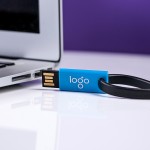A logo is one of the most basic aspects of a company’s branding. How hard can it be, since everyone does it? It might be worth considering that plenty of people get it very wrong, and the impact of this mistake shouldn’t be underestimated. Your logo could help you make sales, encourage people to put trust in your brand, and ultimately turn your business into a genuinely iconic image. Alternatively, it could create the wrong impression and raise questions about your professionalism. Which route do you want to take? Maybe there pointers will help you avoid some common mistakes.
1) Be as unique as possible
Although there are limitations here, and some people may believe it’s impossible to create a truly unique logo at this point, it’s a vital element of any successful brand’s visual appeal. Your logo doesn’t have to be a literal representation of your product or business – it’s much better to make it different from anything else on the market.
2) Reflect and introduce your brand
While we stand by the above point that you should avoid being too literal, you still need to find some way of translating what matters about your brand into image form. Think about what emotions you want people to feel when looking at your logo, and what you want them to assume about your brand from the second they see it. A tiny detail can be loaded with important meaning.
3) Use colours wisely
This is another aspect of reflecting the personality and tone of your brand, as well as creating positive associations and drawing on certain psychological links between colours, feelings and stereotypes. Scientific research may point you in an interesting and valuable direction depending on what your company needs to get across to people in order to attract attention.
4) Incorporate your name
If you’re at the stage of choosing your logo, your brand probably isn’t a superpower in your market yet, so you shouldn’t be focusing only on a picture or symbol. You need your company name to be included in your primary logo, which means thinking about typography carefully. If your name is completely unique, you may not need an icon to go with it, but usually a pair works best.
5) Flexibility is key
Especially when you consider the different forms of digital and print media that you’ll be using to promote your brand, it’s more important now than ever before to make sure your logo isn’t only optimised for one purpose. It needs to be flexible so it will look right in different sizes, on different backgrounds and in different contexts. You might have multiple versions of your logo for different uses, but they all need to be extremely consistent and convey the same message.



